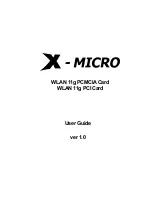
6.1 External clock and reference
62
U5303A User's Manual
6.1 External clock and reference
For applications for which the user wants to replace the internal clock of the acquisition card and
drives the ADC with an external source, either an external clock or an external reference signal can be
used. The clock or reference signal can be entered into the ADC card by the dedicated
CLK IN
and
REF IN
connectors.
External clock (CLK IN)
The External Clock may be used to vary the sampling rate of the ADC card. If selected for the ADC
card, it must be continuously present to operate correctly. The input is AC coupled.
Parameter
Value
Sampling rate
option
-SR0
-SR1
-SR2
-SR3
Frequency Range
500 MHz to 1 GHz
1.8 to 2 GHz
1.8 to 3.2 GHz
3 to 4 GHz
Resulting sampling rate
without interleaving
250 MS/s to
500 MS/s
900 MS/s to 1 GS/s
900 MS/s to 1.6 GS/s
1.5 GS/s to 2 GS/s
Resulting sampling rate
with interleaving
(-INT option)
NA
1.8 GS/s to 2 GS/s
NA
Minimum Amplitude
0.5 Vpp into 50 Ω
Maximum Power
15 dBm
Maximum Voltage
±10 V
Threshold
0 V
Table 6.1
- External clock input specifications.
The sampling rate corresponds to half of the external clock frequency in 2-channel mode (non
interleaved channels). In interleaved mode (only available with the -INT option), the sampling rate
corresponds to the frequency of the external clock signal.
External reference (REF IN)
For applications that require greater timing precision and long-term stability than is obtainable from the
internal clock, a 100 MHz reference signal can be used.
The external reference is nominally at 100 MHz. However, frequencies in a range will be accepted. If
your input is not at exactly the specified value, you must remember to compensate for the difference in
your application since the ADC card and the driver have no way to know about such deviations.
















































